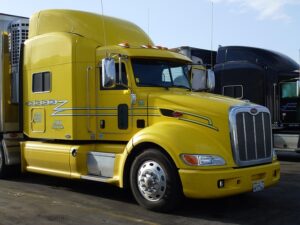Registering Your Car in California: Step-by-Step Guide with DMV VIN Verification
Looking to register your car in California? This comprehensive guide walks you through the entire process, from understanding eligibility requirements to paying registration fees. We’ll break down the…….

Looking to register your car in California? This comprehensive guide walks you through the entire process, from understanding eligibility requirements to paying registration fees. We’ll break down the essential steps, including gathering necessary documents and completing either an in-person or online application. A key step is performing a DMV VIN verification, ensuring your vehicle’s identity and compliance. By following these straightforward instructions, you’ll be cruising on California’s roads legally and with ease in no time.
- Understand Eligibility Requirements for Car Registration in California
- Gather Necessary Documents for Your Vehicle
- Perform DMV VIN Verification: Steps and Importance
- Complete Application Process: In-Person vs Online Options
- Pay California Car Registration Fees and Obtain Your Plate
Understand Eligibility Requirements for Car Registration in California

Before you begin the registration process for your car in California, it’s crucial to understand the eligibility requirements. One key step is ensuring that your vehicle meets all safety and environmental standards set by the state. This includes passing a smog test, which verifies that your car’s emissions are within acceptable levels. The Department of Motor Vehicles (DMV) conducts these inspections, often referred to as VIN inspections or VIN verifications, using the unique Vehicle Identification Number (VIN) of your vehicle for accurate tracking and record-keeping.
Additionally, you’ll need to have all necessary documentation in order, including proof of ownership, current insurance, and payment for registration fees. If you’re importing a car or purchasing one from out of state, there might be further requirements, such as a mobile VIN verification service, to ensure the vehicle’s history and condition before final registration. These steps are designed to maintain California’s high standards for road safety and environmental protection.
Gather Necessary Documents for Your Vehicle

Before registering your car in California, make sure to gather all the essential documents related to your vehicle. This includes the vehicle registration certificate from the previous state, a valid driver’s license, proof of insurance, and a completed Application for Title and Registration form (DMV Form 2605). Additionally, you’ll need to undergo a DMV VIN verification process, which can be done through a mobile vin verifier or by scheduling an in-person appointment.
A crucial step in the registration process is ensuring your vehicle’s identity through accurate VIN inspection. This involves matching the Vehicle Identification Number (VIN) on your car with the information provided by the manufacturer. You can facilitate this process using a mobile vin verification service, which allows for convenient and efficient documentation of your vehicle’s details. By having all these documents ready, you’ll streamline the registration procedure at the California Department of Motor Vehicles (DMV).
Perform DMV VIN Verification: Steps and Importance

To register your car in California, performing a DMV VIN (Vehicle Identification Number) verification is a crucial step. This process ensures that the vehicle matches the information on record and helps prevent fraud or theft. Here’s how to do it:
1. Gather Documents: You’ll need the title, registration certificate, proof of insurance, and your valid driver’s license or state ID card.
2. Visit a California DMV Office: While you can also complete this online, visiting an office is often more efficient as staff can assist with any issues immediately.
3. Complete the Form: Fill out the required form, providing details about your vehicle, including its make, model, year, and VIN.
4. Submit for Inspection: A DMV inspector will perform a mobile vin inspection to verify the VIN’s accuracy by comparing it against industry standards and their database.
5. Wait for Results: Once verified, you’ll be issued a registration certificate and license plates. If there are any discrepancies, you may need additional documents or steps to resolve them.
A mobile vin inspection or vin inspection by a trusted mobile vin verifier ensures that the process is seamless and accurate, streamlining your car registration in California.
Complete Application Process: In-Person vs Online Options

Completing the registration process for your vehicle in California can be done efficiently through both in-person and online methods. The Department of Motor Vehicles (DMV) offers these flexible options to suit different preferences. One crucial step, regardless of your chosen approach, is the DMV VIN verification, ensuring your car’s unique identifier is accurate and legitimate.
For those who prefer a more traditional route, visiting a local DMV office is an option. You’ll need to bring relevant documents and pass inspections. Alternatively, California’s digital services allow you to register online, including options for mobile VIN inspection or vin inspection through certified professionals. This method streamlines the process, offering convenience and potentially saving time by eliminating waiting periods often associated with in-person visits.
Pay California Car Registration Fees and Obtain Your Plate

After completing your vehicle’s registration application at the California DMV, it’s time to settle the fees. The cost of registering a car in California varies depending on factors like your vehicle type and age. You can pay online or visit a local DMV office. Once your payment is processed, you’ll receive your Vehicle Identification Number (VIN) verification, which is crucial for plate issuance.
With your VIN inspection complete, whether it’s done at the DMV or through a mobile vin verifier service, you’re one step closer to securing your car plates. The state will assign unique license plates based on your vehicle information. This process ensures that every registered vehicle in California has its identity confirmed, enhancing road safety and traffic management.
Registering a car in California involves understanding eligibility requirements, gathering essential documents, completing a simple application process, and paying the corresponding fees. As you’ve seen, the DMV VIN verification step is crucial for ensuring accuracy and preventing fraud. Whether you choose to handle this in-person or online, remember that proper registration not only complies with state laws but also contributes to a safer and more organized vehicle ecosystem.







